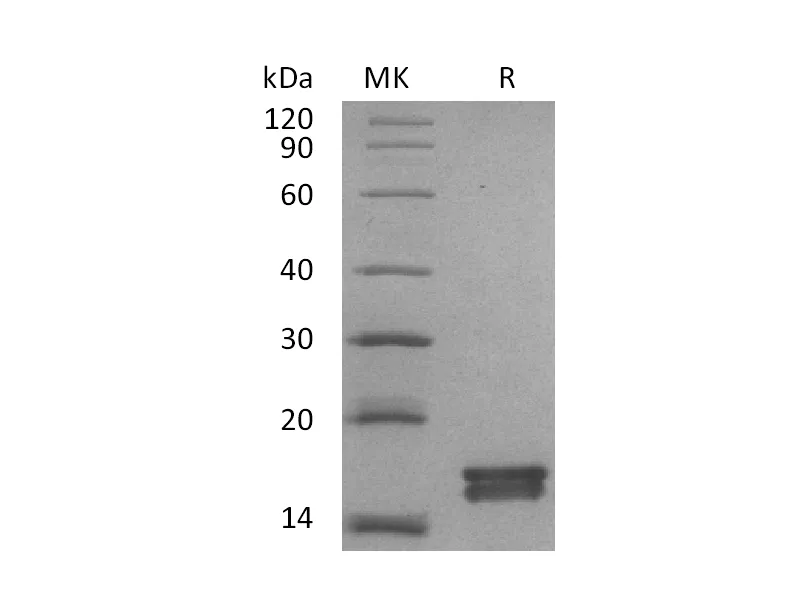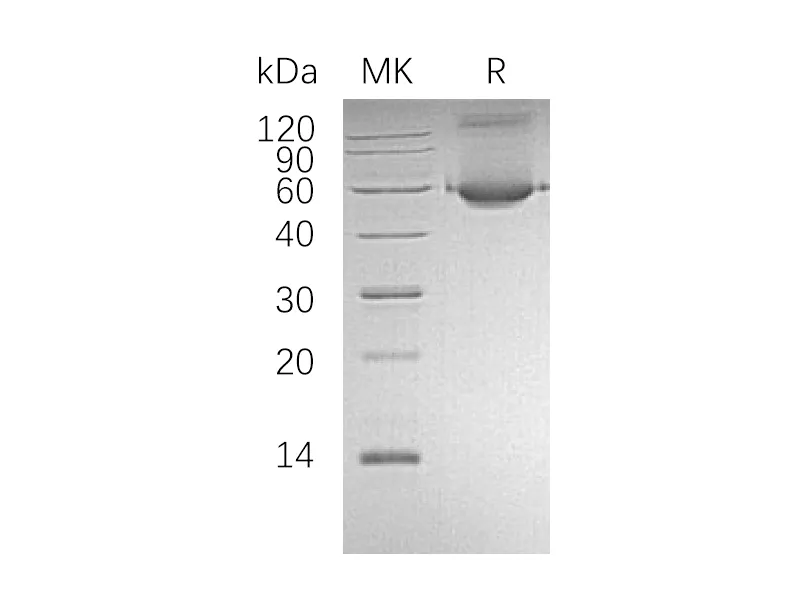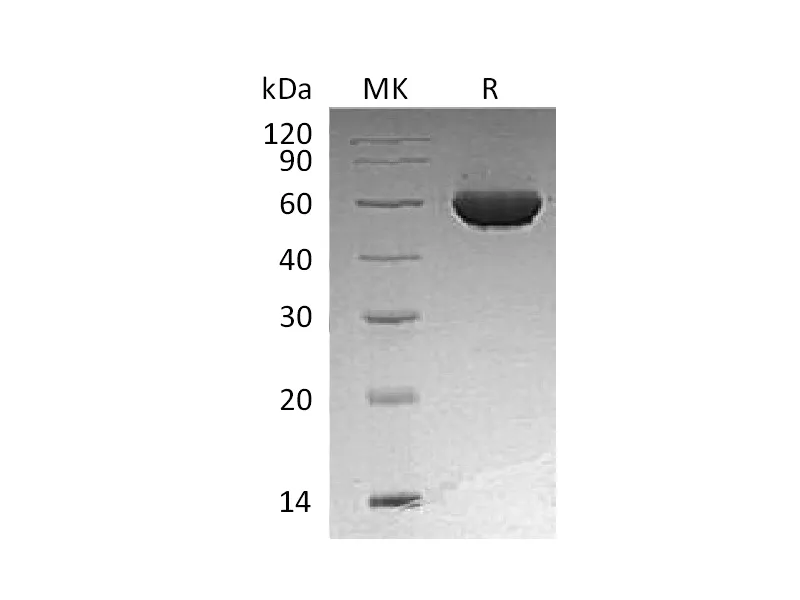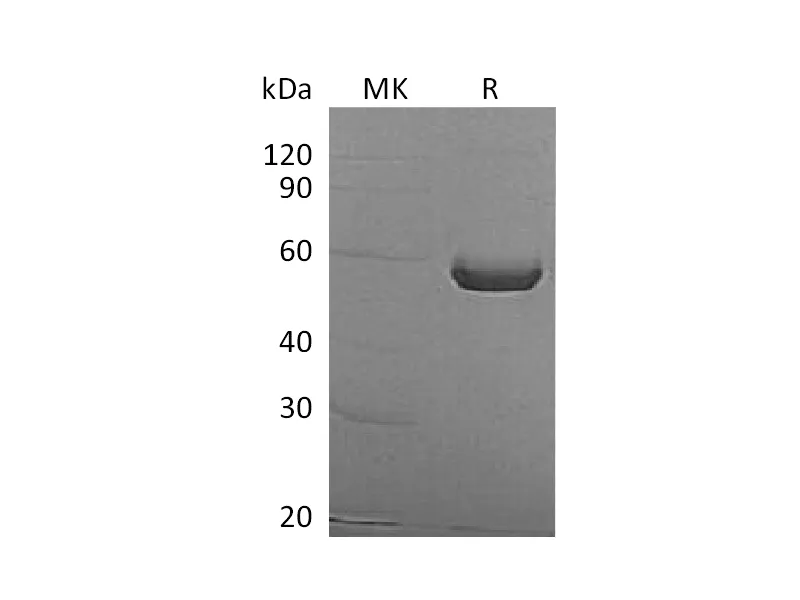Alternative Names
CD265; ODFR; TNFRSF11A; TRANCE R; CD265; CD265 antigen; FEO; ODFROSTS; OFE; OPTB7; PDB2; RANK1; Receptor activator of NF-KB; receptor activator of nuclear factor-kappa B; TRANCER; tumor necrosis factor receptor superfamily member 11A
Background
Receptor Activator of Nuclear Factor κ B (RANK), also known as CD265, TRANCE Receptor or TNFRSF11A, is member of the tumor necrosis factor receptor (TNFR) molecular superfamily. RANK is the receptor for RANK-Ligand (RANKL) and part of the RANK/RANKL/OPG signaling pathway that regulates osteoclast differentiation and activation. It plays a vital role in bone remodeling and repair, immune cell function, lymph node development, thermal regulation, and mammary gland development. RANK is constitutively expressed in skeletal muscle, thymus, liver, colon, small intestine, adrenal gland, osteoclast, mammary gland epithelial cells, prostate, vascular cell, and pancreas.
Note
For Research Use Only , Not for Diagnostic Use.




